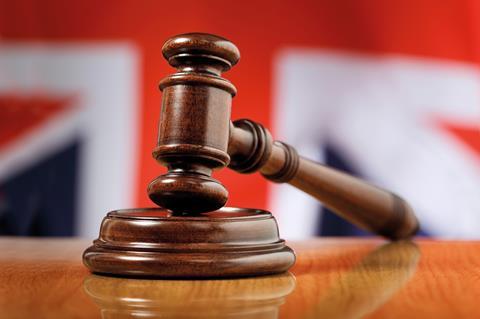I am sometimes asked to approve a picture to summarise the work that lawyers do. Photos of men in suits frequently crop up. I say: ‘There should be no real people. Whichever people you choose, some will say that that does not represent them or their work.’

Then I am passed images of a gavel, which is instantly recognisable as a system of justice, but not in use in the UK.
That leaves blindfolded Lady Justice, with sword in one hand and scales in the other. She comes from the Roman goddess Justitia and sits on top of the Old Bailey in London (though not blindfolded there).
Lady Justice is also part of the Law Society’s coat of arms, which appears in the middle of the welcoming arch at the entrance to the Society’s Chancery Lane headquarters. So we have adopted her – or at any rate did so when the coat of arms was granted in 1845.
But she is a very tired symbol now and represents more than just lawyers, being part of the court system as well.
In our case she is also just a small figure in a very complicated heraldic design. The Law Society retains the coat of arms as part of its current logo, but it has been stripped down: the drapery has gone, and with it the Latin slogan, along with the ornaments on the Pegasus and lion which stand on either side of the now much simplified shield. Heraldic emblems may have been suitable in the 1840s, but they don’t exactly reflect a modern image.
It is interesting that the coat of arms has been retained at all because, apart from the tiny Lady Justice at its top, there is nothing about the Pegasus, lion or shield which screams ‘solicitors’. If you took away the title of the organisation and showed it around, it is unlikely anyone would guess it was ours, although the tiny Lady Justice gives a clue as to the general sector. But what would scream ‘solicitors’?
At the bottom of our full coat of arms, there is the Latin phrase leges juraque servamus. Google Translate renders that ridiculously as ‘We serve laws and laws’, but elsewhere I see it as ‘We serve laws and ordinances’, though it is probably better translated as ‘We serve laws and justice’ or ‘We serve laws and rights’.

Someone once jibed under one of my previous articles, which described the activism of some climate lawyers, that it meant ‘We are not a pressure group’. In other words it was not the role of the Law Society to drift into any kind of activism.
But although we may now quibble over the best translation of two rather similar Latin words, leges and iura, the real debate is what servamus means. Does it mean that anything legal goes? And that it is not a lawyer’s job to enquire whether the particular transaction or litigation might be aimed at silencing justified criticism, damaging the climate or human rights, or laundering the money or reputation of someone who has acquired a dubious fortune? In that sense, it might be better to translate iura by the broader word of ‘justice’, to accompany servamus.
But, again, ‘We serve law and justice’ could fit any player in the justice system – the bar (images of Lady Justice all over its website and a stylised scales as part of its logo), other legal professionals, the regulators, and the court system.
We are also a very diverse profession. The threatened species of duty solicitor visiting the cells on a Saturday night is very different to a mergers and acquisition hotshot in the City or the solicitor working overseas (of whom there are now around 12,000) – and there are those who work for the mentally ill, for migrants, for farmers. What image or slogan unites them, and at the same time differentiates our profession from the bar and other justice players?
It matters because it defines us. On the one hand, of course, slogans and logos are unimportant, and no one is going to care if the Law Society drops the coat of arms and chooses another suitable image. These things come and go.
But what remains is the debate about our identity. So we retain ‘We serve law and justice’ because we can’t think of anything more precise and relevant. But we still have to decide what ‘serve’ means together with ‘law and justice’. The current debate is: does it mean we are a slave to the words of the law, and never raise our eyes above its literal black letters? And how do we best serve justice if the law is not being used fairly by our clients?
And what about an image to represent us – is there one?
Jonathan Goldsmith is Law Society Council member for EU & International, chair of the Law Society’s Policy & Regulatory Affairs Committee and a member of its board. All views expressed are personal and are not made in his capacity as a Law Society Council member, nor on behalf of the Law Society































7 Readers' comments